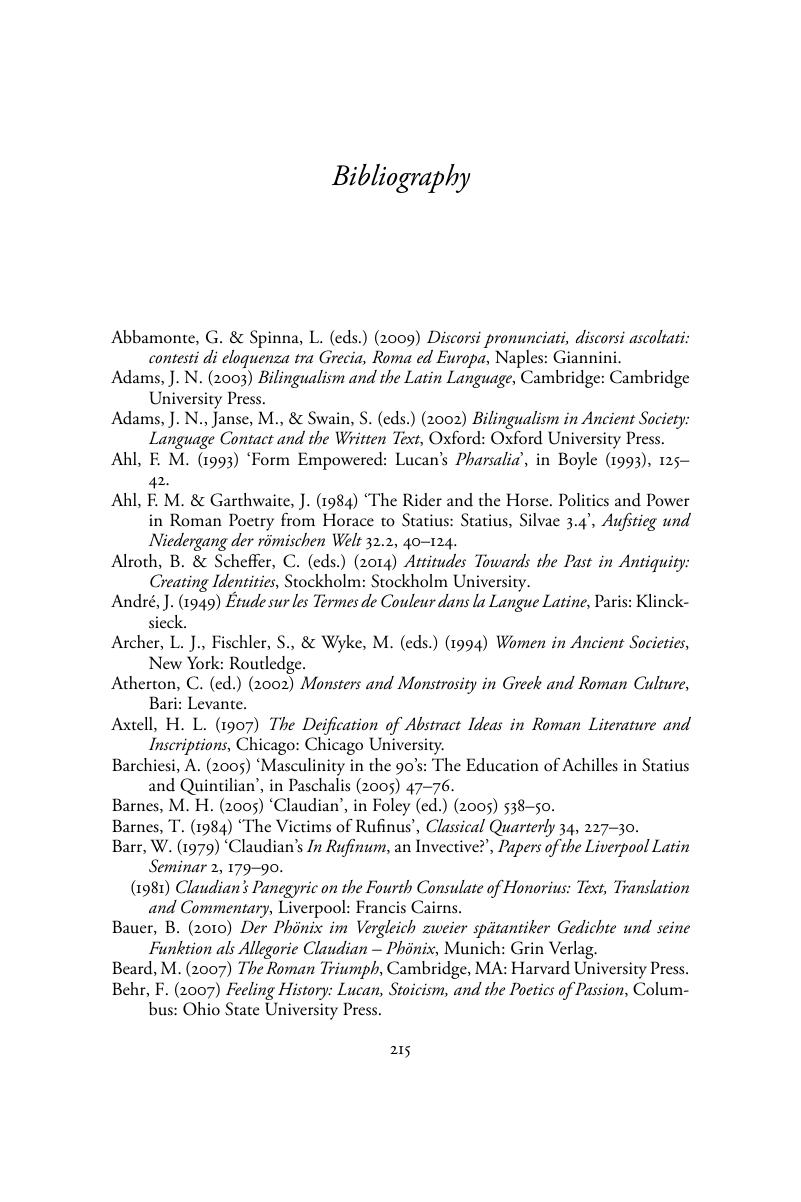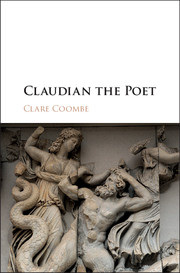Book contents
- Claudian the Poet
- Claudian the Poet
- Copyright page
- Contents
- Preface
- Abbreviations
- Introduction
- Chapter 1 In Rufinum
- Chapter 2 The Universe Ready to be Destabilized (IV Cons., Stil., Rapt., Epith.)
- Chapter 3 Monsters Ready to Destabilize the Universe (c.m. 53, Gig. Gr., Rapt., Eut., VI Cons., Get.)
- Chapter 4 The Hero Keeping the Universe Stable and Restoring the Golden Age (Stil., c.m. 27, Get.)
- Chapter 5 Not Quite the Hero (IV Cons., Fesc., Epith.)
- Chapter 6 The Deceitful Poet (Rapt., Epith., Get., VI Cons., Eut.)
- Conclusion
- Bibliography
- Index Locorum
- Index
- References
Bibliography
Published online by Cambridge University Press: 26 February 2018
- Claudian the Poet
- Claudian the Poet
- Copyright page
- Contents
- Preface
- Abbreviations
- Introduction
- Chapter 1 In Rufinum
- Chapter 2 The Universe Ready to be Destabilized (IV Cons., Stil., Rapt., Epith.)
- Chapter 3 Monsters Ready to Destabilize the Universe (c.m. 53, Gig. Gr., Rapt., Eut., VI Cons., Get.)
- Chapter 4 The Hero Keeping the Universe Stable and Restoring the Golden Age (Stil., c.m. 27, Get.)
- Chapter 5 Not Quite the Hero (IV Cons., Fesc., Epith.)
- Chapter 6 The Deceitful Poet (Rapt., Epith., Get., VI Cons., Eut.)
- Conclusion
- Bibliography
- Index Locorum
- Index
- References
Summary

- Type
- Chapter
- Information
- Claudian the Poet , pp. 215 - 231Publisher: Cambridge University PressPrint publication year: 2018

